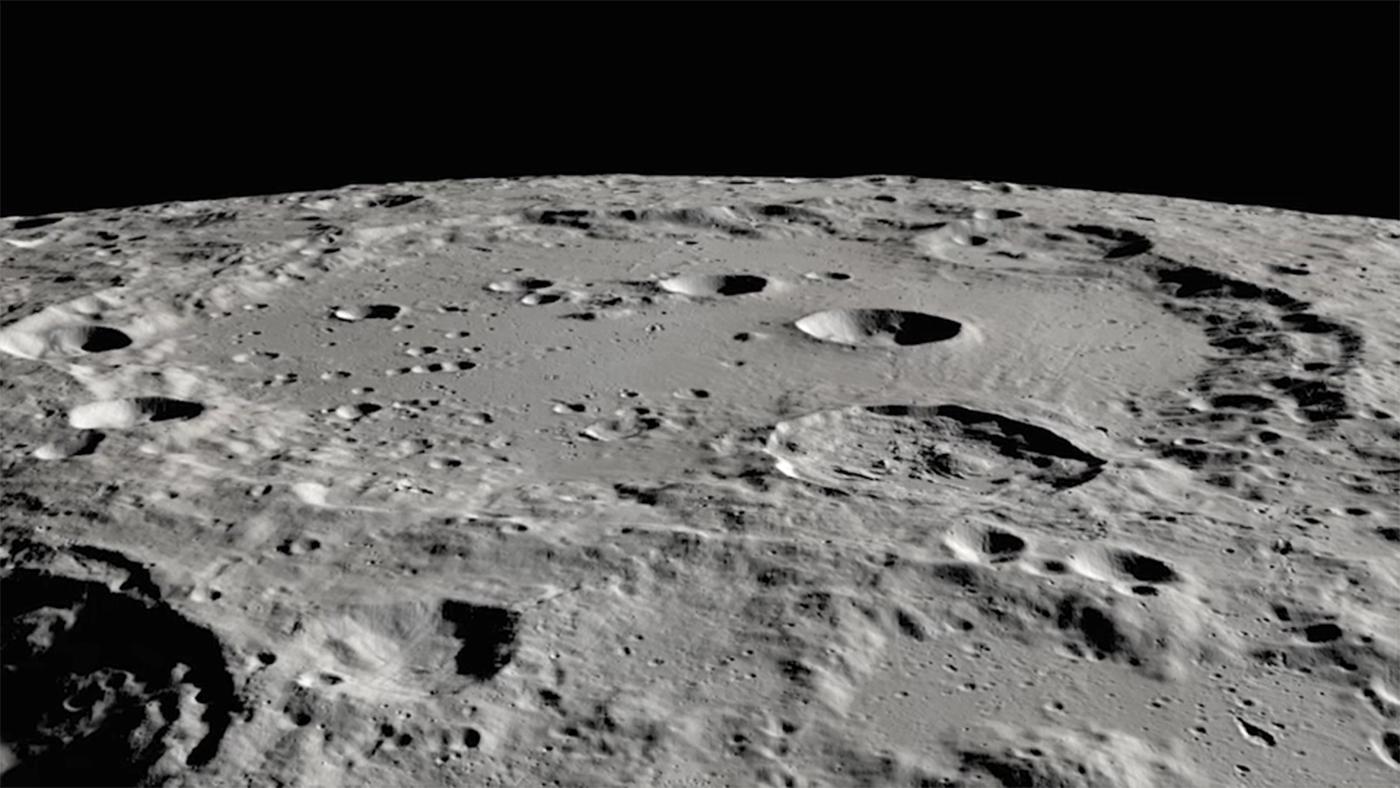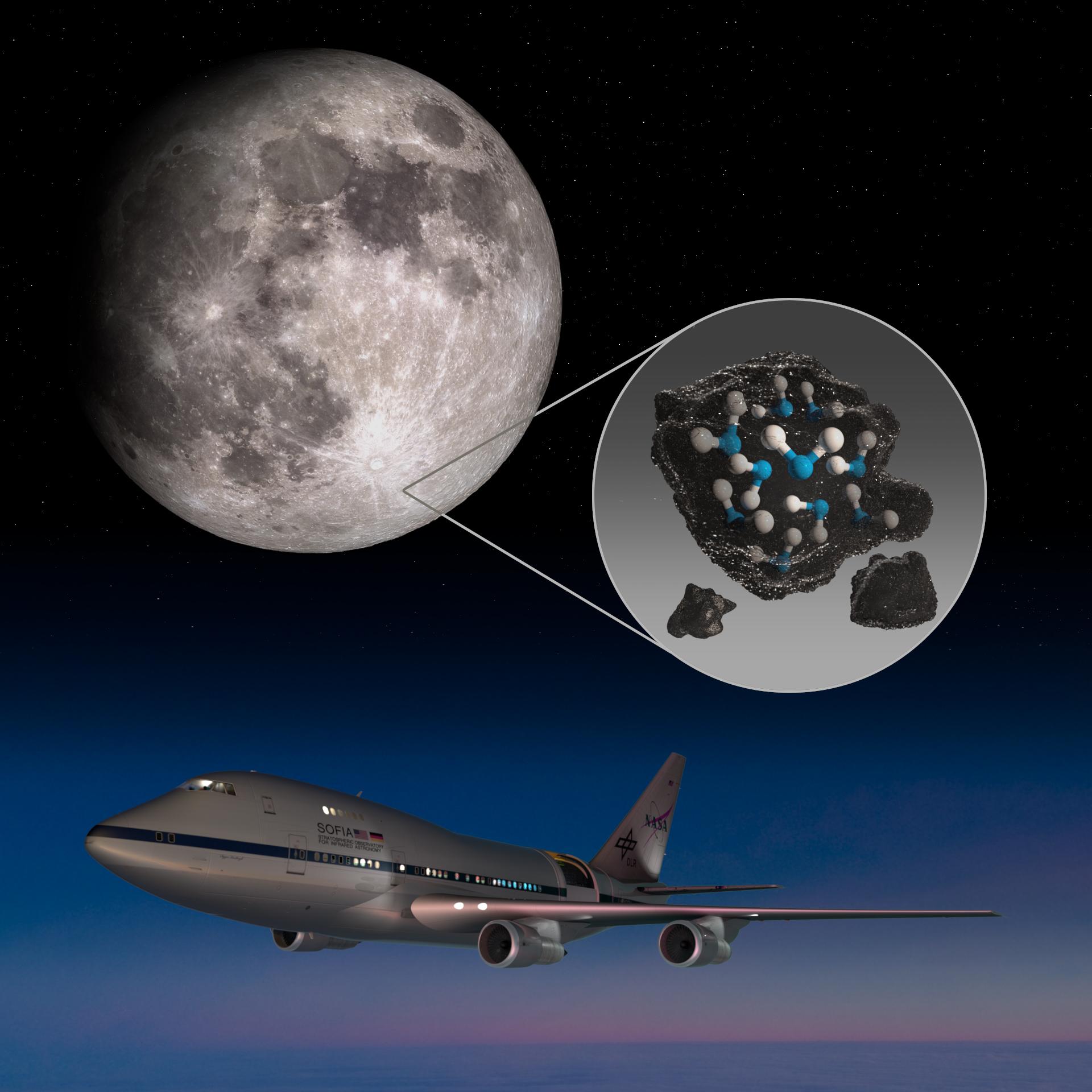Water on the moon is more common than we thought, studies reveal
Lunar "cold traps" bode well for future Artemis astronauts, NASA says.
Editor's note: You can follow NASA's announcement of water on the moon live here.
For the first time ever, scientists have identified water on the moon's sunlit surface. They also found that water is more common on the moon than previously thought, with pockets of ice hiding in shadowy regions of "eternal darkness," some as small as a penny, new studies reveal.
Scientists have been finding signs of water on the moon since 2009 and, in 2018, confirmed the presence of water ice on the lunar surface. Now, researchers in two new studies have detected water at one of the largest crater formations on a sunlit surface on the moon and also found that the lunar surface could be harboring plentiful patches of secret ice in "cold traps," regions of permanently shadowed spots on the moon.
"If you can imagine standing on the surface of the moon near one of its poles, you would see shadows all over the place," study author Paul Hayne, assistant professor in the Laboratory of Atmospheric and Space Physics at the University of Colorado, Boulder, said in a statement. "Many of those tiny shadows could be full of ice."
Related: How the Moon Formed: 5 Wild Lunar Theories | Space (Infographic)

Finding water on the moon
In one study, researchers led by Casey Honniball, a NASA postdoctoral researcher at NASA Goddard Space Flight Center in Maryland, studied water on the moon using data from NASA's SOFIA (the Stratospheric Observatory for Infrared Astronomy) airborne telescope. With these observations, the scientists, for the first time in history, detected water on sunlit lunar surface.
Previous work identifying water on the moon was based on a spectral signature, the distinct "barcode" that scientists use to identify materials, which is reflected as a function of wavelength. But that data doesn't distinguish between water and hydroxyl (the OH molecule) bound to minerals on the lunar surface.
Get the Space.com Newsletter
Breaking space news, the latest updates on rocket launches, skywatching events and more!
Previous observations spotted a chemical signature that could denote water or hydroxyl but, with these new observations, researchers were able to spot the unique chemical signature of water. The scientists found water near Clavius Crater, one of the largest crater formations on the moon, and also at a low-latitude portion of Mare Serenitatis.
The researchers found that this water exists at around 100 to 400 parts per million. The scientists suggest that this water is likely "sandwiched" between grains on the lunar surface, which protects it from the environment.
Trapping lunar water

In the other study, led by Hayne, researchers used data from NASA's Lunar Reconnaissance Orbiter spacecraft in orbit around the moon to study the distribution of cold traps, where water could exist not just transiently, but permanently.
The scientists found a wide variety of cold traps, including "micro cold traps" as small as 0.4 inches (1 centimeter) in diameter, and evidence that there could be hundreds or even thousands of times more of these tinier "micro" cold traps than larger ones. They also found these permanent shadows at both poles.
In fact, Hayne's team found that a whopping 15,000 square miles (40,000 square kilometers) of the lunar surface could potentially hold water. That's more than twice the area scientists previously earmarked for water ice on the moon.
The interesting nature of these "cold traps," is that they're not just cold, shadowy areas where water is more likely to congregate. They are so cold that water or ice would be literally trapped there for incredible amounts of time.
"The temperatures are so low in cold traps that ice would behave like a rock," Hayne said in the same statement. "If water gets in there, it's not going anywhere for a billion years."
While Hayne and his team stated that they need to actually find this ice with rovers or crewed missions to fully verify its existence, this new finding could prove monumental in humanity's plans to not only return astronauts to the moon (NASA hopes to do that by 2024 with its Artemis program), but also to create long-term human encampments on the lunar surface as a proving ground and jumping-off point to Mars.
"If we're right, water is going to be more accessible for drinking water, for rocket fuel, everything that NASA needs water for," Hayne said in the same statement. "Astronauts may not need to go into these deep, dark shadows … They could walk around and find one [cold trap] that's a meter wide and that might be just as likely to harbor ice."
Honniball's work was published today (Oct. 26) in the journal Nature Astronomy. Hayne's work was also published today in the same journal.
Email Chelsea Gohd at cgohd@space.com or follow her on Twitter @chelsea_gohd. Follow us on Twitter @Spacedotcom and on Facebook.
Join our Space Forums to keep talking space on the latest missions, night sky and more! And if you have a news tip, correction or comment, let us know at: community@space.com.

Chelsea “Foxanne” Gohd joined Space.com in 2018 and is now a Senior Writer, writing about everything from climate change to planetary science and human spaceflight in both articles and on-camera in videos. With a degree in Public Health and biological sciences, Chelsea has written and worked for institutions including the American Museum of Natural History, Scientific American, Discover Magazine Blog, Astronomy Magazine and Live Science. When not writing, editing or filming something space-y, Chelsea "Foxanne" Gohd is writing music and performing as Foxanne, even launching a song to space in 2021 with Inspiration4. You can follow her on Twitter @chelsea_gohd and @foxannemusic.









